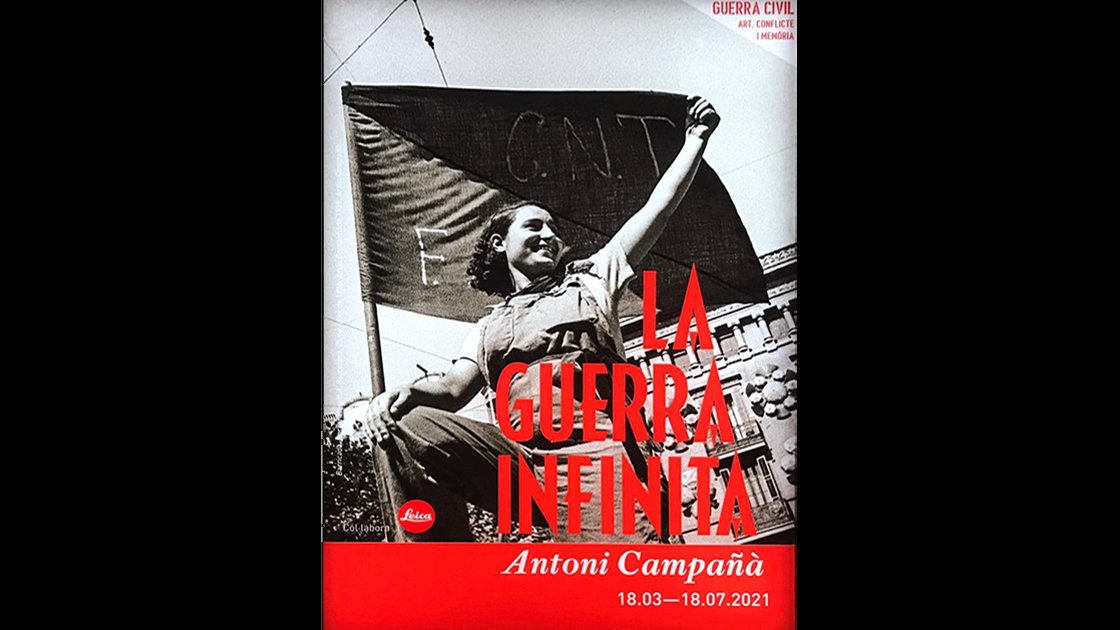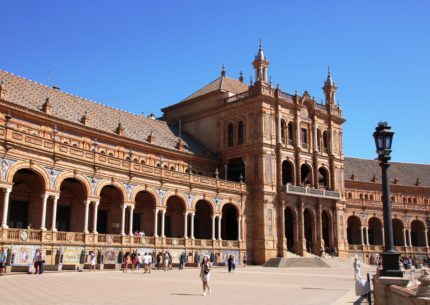
INTO THE SPANISH CIVIL WAR. A SPECIAL TOUR EXPERIENCE
This week we want to take you on a tour to experience a pivotal event in the 20th century – Spain: the Spanish Civil War (1936 – 1939).
It’s a perfect moment to do so, since the photographic exhibition “The Infinite War” opened a few weeks ago at the Catalonian National Museum of Art (MNAC) in Montjuïc, Barcelona.
The Spanish Republican song “Ay Carmela El paso del Ebro” is our musical suggestion for you to listen to while you read this blog post.
The “Infinite War” and the work of Antoni Campañà
The “Infinite War” introduces the work of Antoni Campañà (1906 – 1989), a professional photographer active in Spain for about 60 years during the 20th century.
Although covering his full career, the exhibition focuses essentially on his work during the Spanish Civil War.
The red boxes, discovered in 2018
In 2018 two red boxes were discovered in his family house in Sant Cugat del Vallès, when the building was about to be torn down.
Antoni Campañà had stored more than 5000 pictures he had taken during the three years of the war, a traumatic experience which he lived through and documented with his camera.

Though some of his pictures on the war had been published during the war, most of the material exhibited had been stored in the boxes for decades.
For most of this material, it was the first time it had been seen in 80 years.
Amazing photographic heritage
This amazing photographic heritage has been rescued from oblivion and offers us the opportunity to reflect on this tumultuous historical period and see it through Campañà’s artistic eye.
Visit the “Infinite War”
The exhibition will be open to the public until July 18th. Be sure not to miss it!
The Second Republic and the 1936 military coup
The advent of the Second Republic (1931) was initially saluted by many as the opportunity for Spain to open up to modernity and to a more just society.
However, the Republic faced difficulties even from the very beginning.

The July 1936 coup d’Ètat
The military coup staged by a group of generals in the month of July 1936 was meant to put a quick and violent end to the Second Spanish Republic.
Those officers and their supporters had a profound dislike of the new model of society and the set of reforms which, in a time of great social disparity and injustice, had begun to improve the livelihoods of the working classes.
The military coup’s incomplete success
The coup was successful in certain parts of the country but failed in others, especially in bigger cities such as Madrid, Barcelona, and València.
Popular resistance to the military insurrection
The participation of the working class and the Trade Unions was crucial in countering the military coup, especially in the bigger cities.
Popular support for the Republic was widespread there.
Many were convinced that the social revolution had finally started. In the beginning, there was a lot of optimism out in the streets in the Republican area.

Militias, to the front
In the wake of the insurrection, the Government of the Republic remained completely paralyzed and for weeks. This would cripple a coordinated defense and resistance in the months to come.
Many members of Unions who had fought to counter the insurrection organized into militias of volunteers and left for the front, full of enthusiasm and with high hopes for the future.
Volunteers would also soon flock from other countries to help the Republic and defend democracy.
The Church, under attack
The Spanish Catholic Church, which had traditionally sided with the old ruling classes, was deeply detested by parts of the working class.

Because of the situation of chaos following the insurrection, the outraged population vented their anger on churches, setting them on fire and killing and mistreating members of the Catholic Church.
The Republican Government was powerless to stop it.
This cast a shadow over the Republic’s image, and was exploited to the fullest by the insurrected on the international scene.
Life under the bombs
The population of Barcelona, like many other cities and coastal areas in the Republican zone, was frequently subject to bombardment during the war.

Terror bombings
In agreement with the Francoist side, the Italian Fascist Aviazione Legionaria and the German Nazi Condor Legion made constant air raids along the Spanish Mediterranean coast and throughout the Republican territory.
More often than not, besides attacking military and industrial installations, they carried out a terror bombing strategy intentionally targeting the civilian population.
Air raid shelters
Air raid shelters were built across the country but especially in major cities.
In Barcelona, more than 1300 were constructed to protect the residents, who often participated actively in their construction.

Refugees
Hundreds of thousands of people escaped before the wave of terror caused by the savage attacks of the Francoist land armies.
Because of refugees, by the end of the conflict, Catalonia had increased its population by one million. This brought about severe problems of food scarcity.
Hunger
Food becomes scarcer and scarcer
Hunger became more and more of an issue throughout the country, but especially in the Republican area, as it gradually lost agricultural territories to the Francoist side.
Food supplies grew scarcer and scarcer and the black market boomed in the Republican area.

Dr. Negrín’s pills
By 1938, civilians who could not acquire food through informal channels basically subsisted on a meagre diet of lentils, jokingly called Dr. Negrín’s Pills.*
Because of such a long war, malnutrition was rife.
*Juan Negrín (1892 – 1956), physician and politician, was then the Second Republic’s Prime Minister (1937 – 1939).
Franco’s victory
General Francisco Franco (1892 – 1975), by September 1936 the undisputed leader of the insurrection, finally declared the Civil War concluded in April 1939, just a few months before the beginning of the Second World War.
After a long war of attrition, the general governed Spain with full dictatorial powers and an iron fist.

His ‘reign’ lasted for almost forty years and he far outlived Adolf Hitler (1889 – 1945) and Benito Mussolini (1883 – 1945), without the help of whom his faction would never have succeeded in winning the war.
The Catalonian National Museum of Art’s section on the Spanish Civil War
The Catalonian National Museum of Art also showcases an interesting albeit small collection on the arts during the Civil War.
Especially illustrative of those times are the Civil War posters, which played an essential role in the battle for propaganda.
Finally, you shouldn’t miss “Montserrat” by Juli González, a beautiful head sculpture that, with its scream of horror, symbolizes the terrible pain brought about by the conflict and the harsh post war years.
The Civil War in Barcelona
The Spanish Civil War, after more than eighty years, still is a controversial and highly divisive subject among Spaniards.
However, we believe it is essential to learn about it in order to understand more about not only the history of 20th-century Spain, but also of Europe.

Today, behind the fine appearance of an attractive city center such as that of Barcelona, the careful eye can still spot the physical scars of a war fought between brothers, political ideologies, and international powers.
As for the scars among the people, they remain to this day.
If you are interested in history tours, you have found the right place. Book your Barcelona Civil War Private Tour with us.
Coda or music during the Spanish Civil War
In a time when playing and singing music was a moment of social activity and, in wartime, a way to boost the morale of both soldiers and civilians, popular songs were repurposed or new ones were composed.
Many of them became quite famous and a few were adapted into marching songs. All of them convey the spirit of those times.
Practically all political groups or organizations within both sides, the Republicans and the Francoists, had their own tunes.
If you love music, we suggest that you listen to the songs of the Spanish Civil War.
We want to end with the Spanish Civil War song Gallo Negro, Gallo Rojo (Black rooster, Red rooster), reinterpreted by the great singer Sílvia Pérez Cruz and the Coetus Orchestra.
Enjoy it!
NOTE: The top photograph and many of other images shown in this blog post were taken at the MNAC Museum’s exhibition “the Infinite War” and reproduce completely or partially pictures by Antoni Campañà.


Dignifica parlat desapassionadament de la guerra civil espanyola, en els temps que corren. L’intolerancia i el sectarisme tornen a estar de moda arreu.
Conèixer el passat des de l’òptica de la cultura hauria d’ésser gairebé obligatori, sobre tot per la gent menys gran.
Una gran iniciativa!
Very energetic article, I loved that a lot.
Will there be a part 2?